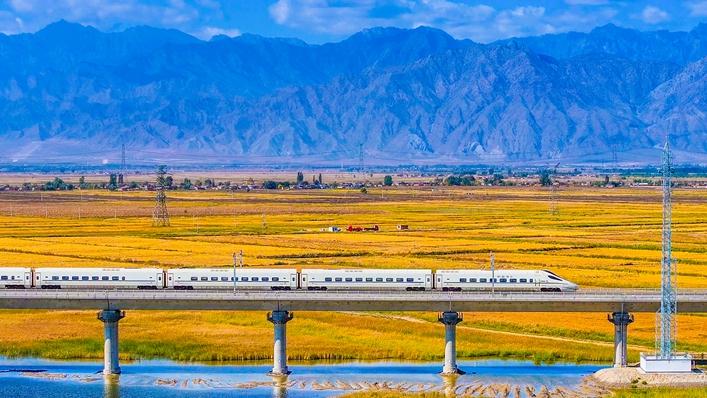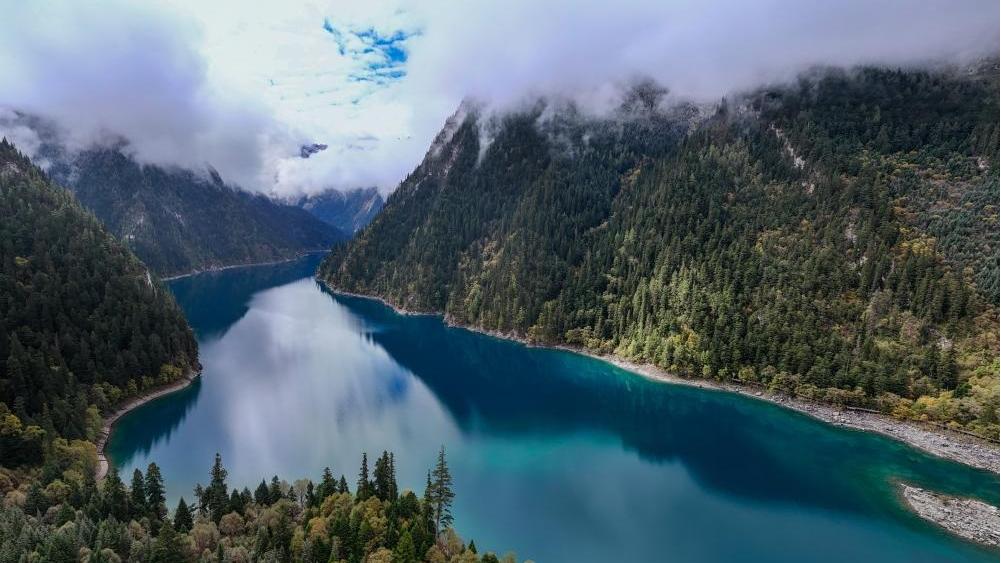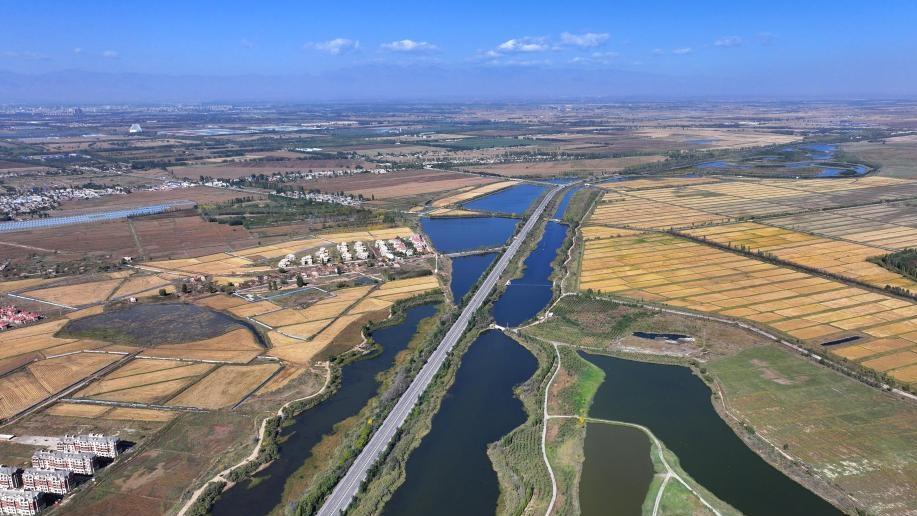Feature: Urban renewal, eco-protection revitalize Beijing
BEIJING, Oct. 14 (Xinhua) -- Located in the heart of Beijing, the Bell and Drum Towers Square bustles with activity as locals and tourists gather on a crisp October morning to explore the over 700-year-old historical site, while nearby residents engage in morning exercises and traditional games.
Against a backdrop of clear skies and lush greenery, this iconic cultural hub offers a vivid snapshot of the Chinese capital's unique blend of history and modern city living.
As night falls, Solana, a commercial hub about 10 km east of the Bell and Drum Towers, comes to life with vibrant energy. Visitors can be seen strolling through the area, shopping and gathering around tables for drinks and exotic cuisine, all set against the romantic backdrop of European-style buildings glowing softly in the dark, while gentle music fills the air.
Solana is also a hotspot for vloggers and a key part of the thriving night economy along the banks of the Liangma River in Beijing's Chaoyang District. Thanks to ongoing ecological protection and commercial planning, the river has transformed from the heavily polluted, sediment-filled waterway of decades past, once lined with illegal structures, into a vibrant destination. Today, it offers night boat tours, with mesmerizing light shows that captivate visitors.
"The integrated development of business, tourism, culture, sports and health is an important part of the high-quality development in Chaoyang District," said Zhang Guanbin, the deputy head of the district government.
Zhang's remarks underscore Beijing's ambition to enhance its appeal and livability through urban renewal and ecological protection, as part of its commitment to high-quality development.
He added that since the beginning of this year, eight major commercial complexes in the district have been renovated, creating nearly 400,000 square meters of new space for business activities.
"The Liangma River cultural and economic belt, for instance, has become a bright spot for tourism consumption targeting global visitors in the Chinese capital," Zhang said, noting that the Solana area received 14 million visitors in the first nine months of 2024, up 15 percent year on year.
"In recent years, Beijing has promoted urban renewal by balancing the preservation of historical culture with sustainable development models, while actively encouraging market participation," said Li Xinyang, an official of the Ministry of Housing and Urban-Rural Development, adding that Beijing is at the forefront of Chinese cities in terms of urban renewal.
These efforts have clearly paid off. According to local government data, Beijing welcomed nearly 22 million tourists during the National Day holiday from Oct. 1 to 7, marking an 18.35 percent year-on-year increase. Tourism revenues reached nearly 27 billion yuan (about 3.8 billion U.S. dollars), up 11.67 percent, with both the number of visitors and total revenue hitting record highs.
Li explained that urban renewal is a key strategy for transforming development approaches and achieving high-quality growth. "The ministry has issued a series of documents to prevent large-scale demolition and construction in urban renewals, and effectively strengthen the protection of history and culture," he said.
In 2023, Beijing launched a three-year action plan to promote urban renewal, aiming to revitalize 5,393 backstreets and alleys through beautification efforts and to create hundreds of boutique streets. The goal is to develop these areas into vibrant quarters with strong business potential and enhanced quality of life for residents.
Last year alone, a total of 1,730 backstreets and alleys were revitalized, including Zhonglouwan Hutong, known for its winding alleys and lanes near the Bell and Drum Towers.
To enhance the living environment, optimize public spaces and improve public services, a comprehensive overhaul was carried out in this area, which had previously faced challenges such as illegal structures, narrow lanes, disorderly vehicle parking, limited green space and general untidiness.
The efforts included relocating some residents on a voluntary basis by providing them with new housing in other areas, demolishing illegally constructed structures, renovating homes, clarifying property boundaries, and conducting research aimed at better preserving historical features.
According to Fan Laiyou, a resident of Zhonglouwan Hutong, these measures brought about a sweeping change to the locality where he has lived his entire life. "In the past, this area would become waterlogged during rain, and fire hazards were significant. However, following the renewal, the lanes have been widened, and the space within the yards has increased."
The 69-year-old resident said that the increased space following the renewal has allowed him the time and opportunity to grow flowers and grass in his yard.
The Bell and Drum Towers in Beijing's Dongcheng District sit on the northern end of the Beijing Central Axis. In July 2024, the Beijing Central Axis was added to the United Nations' cultural heritage list, signifying prestigious recognition for the 700-year-old line of historical and cultural landmarks traversing the heart of the Chinese capital.
Photos
Related Stories
- Beijing's payment facilitation services benefit international visitors
- Beijing plans to expand low-altitude flights for rescue, delivery
- Beijing to host friendship conference marking 70th anniversary of CPAFFC
- Beijing breaks tourism records during "golden week" holiday
- Beijing's audiovisual arts expo welcomes over 60 renowned music labels
Copyright © 2024 People's Daily Online. All Rights Reserved.









